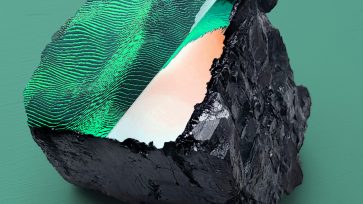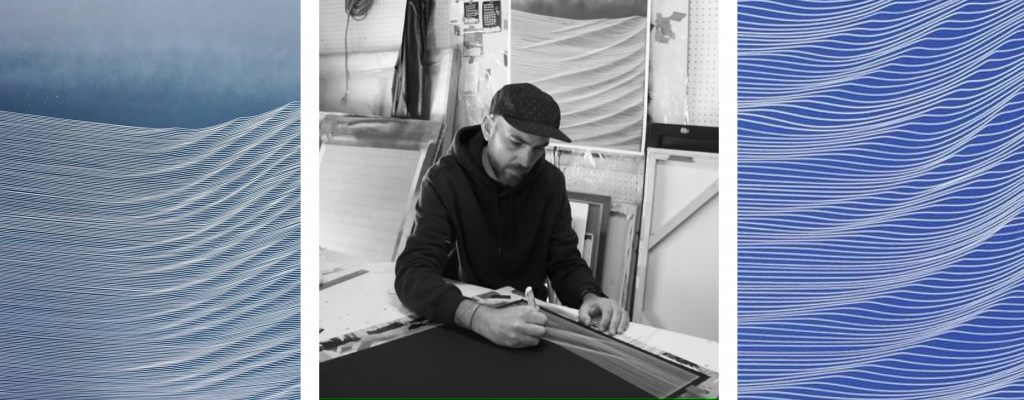
Osborne Clarke | Bristol
Osborne Clarke, a prominent law firm, sought to embrace art and creativity within...
view projectAs everything around us is being transformed by technology, and even our personal perceptions are being adapted and enhanced; the very question of how our humanity is reflected and understood is raised. We must reshape our perceptions to challenge accepted norms to re-envision and rethink the boundaries that shape our world.
Gerd Leonhard, Futurist Philosopher asks…..
Osborne Clarke, a forward-thinking law firm at the forefront of addressing the challenges and opportunities brought about by digital transformation, sought to explore the profound interaction between technology and art. With a focus on the emotive, human side of technological change, Art Acumen has carefully curated a collection and art programme for Osborne Clarke’s London office to act as a starting point for conversation and opening up meaningful dialogue about technology, and its place within our community and relationships. The artwork has been thoughtfully selected to explore the intricate relationship between art and AI, tech and humanity, and ethics and ambitions. We have incorporated both AI generated work and traditional techniques to showcase these ideas and stimulate discussion.

Tom White
It’s art by AI, for AI. By giving the algorithms a voice to speak in, we are better able to see the world through the eyes of a machine.
White’s artwork investigates the Algorithmic Gaze: how machines see, know, and articulate the world. As machine perception becomes more pervasive in our daily lives, the world as seen by computers becomes our dominant reality. White explores this phenomenon in his work. “My work focuses on how machines see the world. I have created a drawing system that allows neural networks to produce abstract ink prints that reveal their visual concepts. Surprisingly, these prints are recognised not only by the neural networks that created them, but also universally across most AI systems which have been trained to recognise the same objects. Neural networks have been trained to recognise thousands of individual items from everyday life, such as as “Iron”, “Hairdryer”, or “Pumpkin”. Using the drawing system he provided, the neural networks directly express in simple ink drawings their own versions of these categories – creating abstract shapes that convey their understanding of the world. The composition, line placement, and colours are all chosen by neural networks attempting to make the drawing best represent the concept. Though these networks were trained only on real world images, when forced to express themselves abstractly they are able to create simpler forms that match their internal representations. After a print is made, White verifies that the computer generated drawing is recognised broadly across other AI vision systems, such as Google and Amazon image recognition systems.
“The AI systems we are creating are their own unique culture, and so often their way of representing the world can seem foreign to what we’ve come to expect. But their ability to abstractly represent concepts that we in turn recognise suggests we may have more in common with the machines we are creating that we realise.”

Mark Rebennack
Mark’s abstract drawings are a meditative exploration which emerged from a challenging period marked by creative block and insomnia. His “Exhale” series focuses on “drawing the breath.” Each line mirrors the length of a single exhale, building upon the last. Starting with a perfectly straight line, the drawing evolves into rolling wave-like forms, which magnifies minor inconstancies (or glitches). Through this repetitive mark making, he captures the beauty of these glitches bringing them to the forefront. These imperfections demonstrate the concept of “innovation” – a unique human quality – and how mistakes can be successes. In addition, these glitches also point to the notion of latent bias (unintentional influences) residing in the very datasets on which AI systems depend, highlighting our ethical responsibility.

Espen Kluge
Sometimes the lines and shapes can be really beautiful, and I don’t think I could calculate that. It’s impossible for me to have these things in my head before I start. I would like to think this is true for all generative artists. It is a very playful process.
Evolution has trained us to read the nuance of human facial expression with a higher degree of sensitivity than any other visual input. From finding a mate to sensing a foe, our ability to read the subtle expressions of others is critical to navigating many of the most important and meaningful aspects of life. Our supercharged sensitivity to these facial signals creates a playground for portrait artists who can combine, bend, exaggerate, and break the signals to manipulate us and make us feel with heightened intensity. Espen Kluge, a composer, a visual artist, and a creative coder does this masterfully. His portrait series Alternatives began by sourcing photographs from online articles which he then inputs into an algorithm. Kluge developed the output with conventional graphic design methods to arrive at a new portrait. All facial expressions are abstracted into meticulously drawn geometric threads. Kluge’s portraits feel monumental and architectural, reminiscent of sculptures from Russian constructivist such as Naum Gabo and Vladimer Tatlin. However, in contrast to the sombre character of the Constructivists, Kluge’s work explodes with a rainbow of colour and emotion.
“The force of art lies in its immediate influence on human psychology and in its active contagiousness.” – Naum Gabo
Nicola Lorusso
Drawing with music gives me the chance to see two pieces of the same track almost talking to each other on the canvas.
Lorusso’s artworks directly respond to the surrounding environment and uses everyday experiences as data sets for his generative algorithms. He designs custom-made algorithms that turn sound into digitally simulated forces with which he creates line-based drawings. Each piece carries the sonic fingerprint of the sounds: music, voice or environment it was generated with. The digital linework is drawn on paper with a pen plotter that simulates a human hand with the precision of a computer. Lorusso is particularly fascinated by the short-circuit generated by these two opposites. With a background in architecture, he developed a passion for computational design and advanced technologies. His interest lies at the convergence between art and technology, human and artificial, analogue and digital. He is fascinated by the physical interactions between matter and forces; his work aims to make visible the hidden reactions between objects.